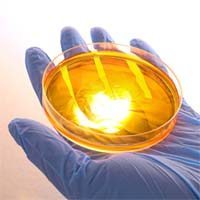Mesothelioma Treatment: The Promise of 3D Printing Technology

New technologies offer hope for more effective treatments for malignant pleural mesothelioma. One such innovation is the use of 3D printing and optical scanning. These new technologies refine photodynamic therapy, a promising approach for mesothelioma management.
Understanding Photodynamic Therapy
Photodynamic therapy uses the power of light to target and destroy cancer cells. Activating a photosensitizer with light leads to the death of cancerous tissue. This therapy offers a targeted and less invasive option for treating mesothelioma.
Mesothelioma is aggressive, often diagnosed late, and challenging to treat. Traditional approaches like surgery alone have limited success rates. Photodynamic therapy, when combined with surgery, shows promise in improving outcomes. But, accurately delivering the right dose of light to the affected area is crucial for its success.
Advanced 3D printing techniques have helped in this area. They create precise models that mimic the intricate structures of the human body. By printing models of the pleural cavity, where mesothelioma occurs, researchers can better understand its complexities. They can also tailor treatment plans accordingly.
Researchers first digitally reconstructed the lung cavity using 3D printing and optical scanning. These models are then compared to CT scans to ensure accuracy. By representing the anatomy, these models help in planning therapy dosages.
Promising Results
The reconstructed models show exceptional anatomical precision. They help doctors plan precise dosage calculations. These models enhance treatment planning. And they also serve as valuable tools for education and equipment calibration. This research marks a significant step forward in personalized medicine for mesothelioma patients.
3D printing and optical scanning technologies open new improvements for mesothelioma treatment. Machine learning algorithms may lead to more effective and tailored therapies. Real-time monitoring systems can enhance treatment delivery and minimize side effects.
The combination of 3D printing and optical scanning holds great promise in refining photodynamic therapy for mesothelioma. These technologies improve dosage precision and treatment planning. Together, they offer hope for better outcomes and improved quality of life. As research continues, we look forward to seeing how these advancements will transform mesothelioma treatment in the years to come.
Source:
Sourvanos, Dennis, Hongjing Sun, Timothy C. Zhu, Andreea Dimofte, Brook Byrd, Theresa M. Busch, Keith A. Cengel, Rodrigo Neiva, and Joseph P. Fiorellini. “Three-Dimensional Printing of the Human Lung Pleural Cavity Model for PDT Malignant Mesothelioma.” Photodiagnosis and Photodynamic Therapy, February 10, 2024, 104014. https://doi.org/10.1016/j.pdpdt.2024.104014.





